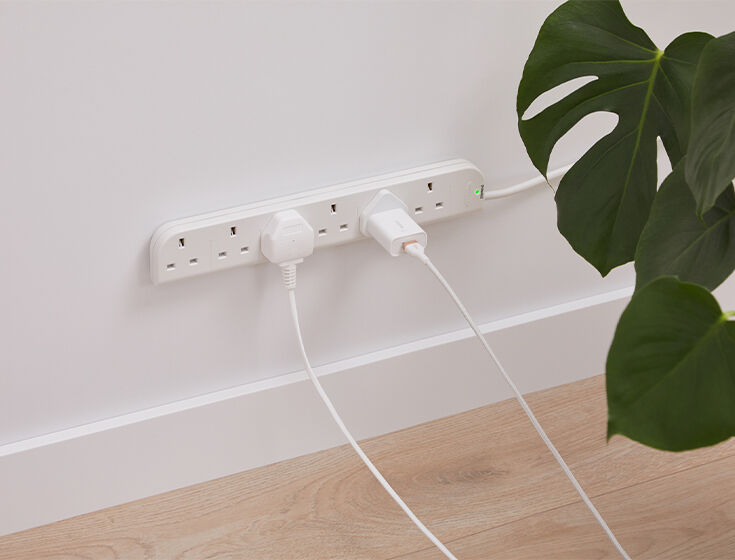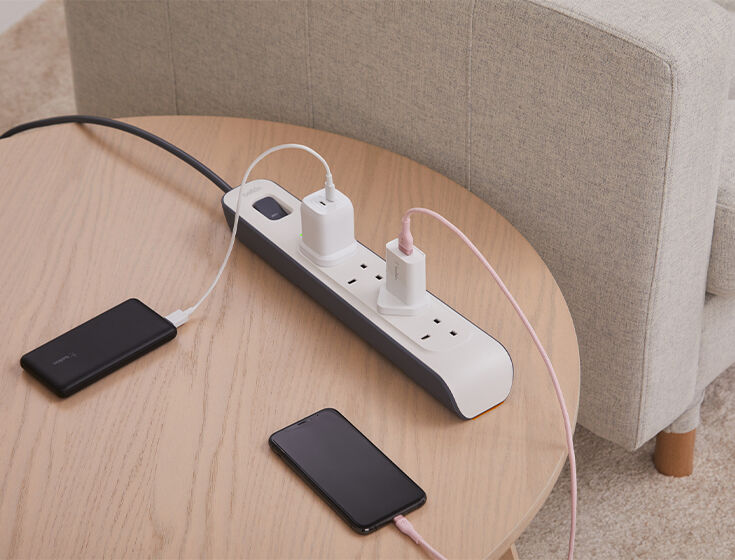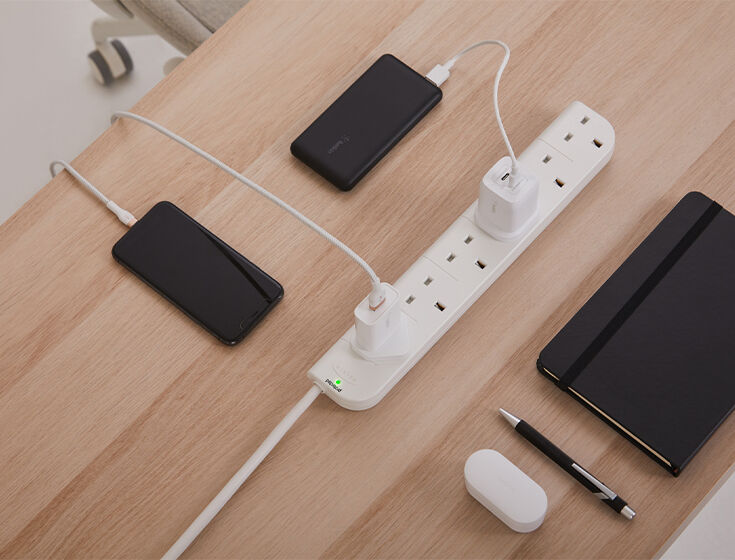What is a power surge?
The term “power surge” refers to a spike in voltage that elevates a device’s electric flow past its designated threshold. A power surge can be categorized in one of two ways:
- Internal: an internal surge is common within households, occurring when a motorized device (e.g., an air conditioner or refrigerator) suddenly and unintentionally shuts off. This electricity is then directed to other appliances attached to the same power grid. Essentially, anything plugged into an outlet within the same place is at risk for absorbing this electricity and surging.
- External: an external surge is caused by an external force, such as a lightning strike or an animal tampering with electrical wiring.
In both instances, our surge protectors work by diverting the extra electricity into an outlet’s grounding wiring, saving the connected devices from absorbing this excess power and overheating or short-circuiting.
Although commonly referred to as a surge protector, other names include spike suppressor, surge suppressor, surge diverter, surge protection device (SPD), or transient voltage surge suppressor (TVSS).
Safety guidelines for surge protectors.
Observing basic safety guidelines minimizes potential risks for device malfunction. Precautionary measures include (but are not limited to):
- Always use our surge protectors indoors in a dry, temperature-controlled location
- Do not exceed the electrical rating of the product
- Do not use our surge protectors with aquariums or other water-related devices and machines
- Uncoil the cord before use
- Do not cover the cord with any material
- Keep children and pets away
- Do not plug a surge protector into an extension cord, also called “daisy chaining”
Replacing a surge protector.
Replacing a surge protector after a power surge event, for example, a lightning storm, is key. When a power surge occurs, our surge protector’s joule capacity will likely take a big hit, making the device less effective. Even without a major power surge, a good rule of thumb is to replace our surge protectors every two years.
In addition to using our surge protectors properly and effectively, taking small proactive steps to prevent internal power surges is also key to ensuring the safety of devices. While external power surges are somewhat unavoidable, internal power surges can be curbed.
A few tips to prevent internal power surges:
- Unplug devices that aren’t in use.
- Periodically upgrade wiring.
- Plug large devices into separate power sources.
- For example, do not plug a dishwasher and refrigerator — two major electricity absorbers — into the same outlet.
- Use our surge protectors throughout a space, especially one in which many tech devices are operating.
Why Belkin?
With over 35 years of experience in creating quality, innovative consumer products, Belkin is uniquely positioned to supply individuals and businesses with surge protectors. Rigorous testing, end-to-end control of the manufacturing process, and human-inspired design make our surge protectors must-haves.












